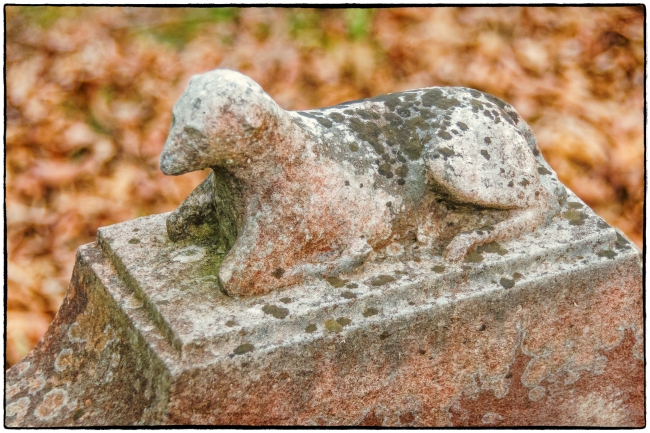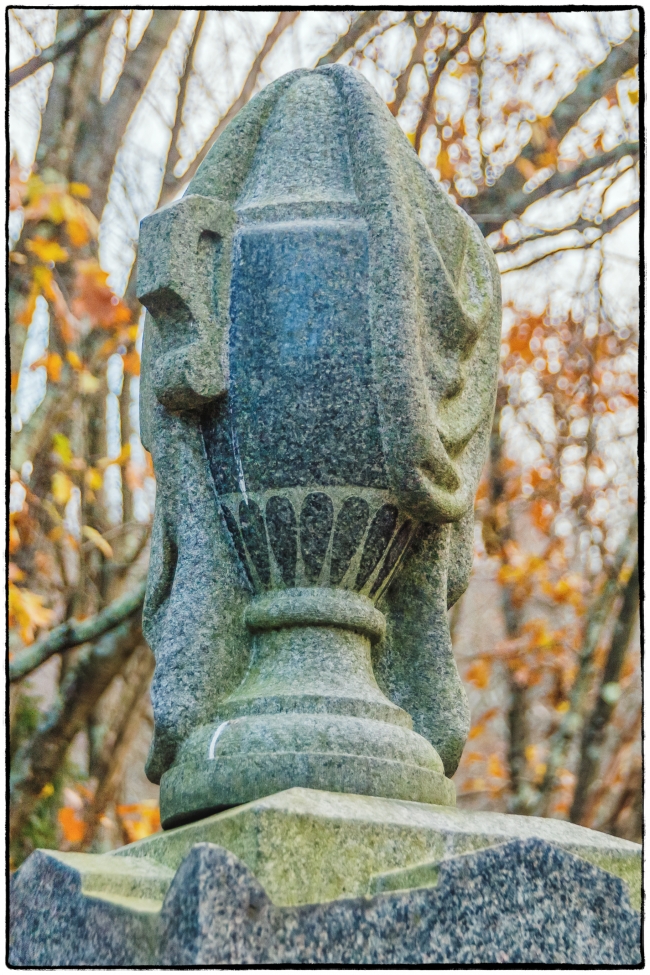As mentioned in an earlier post, there was very little statuary in this cemetery. Here are two that I spotted.
The lovely little lamb above sits on top of a grave bearing the inscription: “Little Aaron and Aramenta.”
A post (Eighteenth-Century Field Trip Part 3: Yorktown Baptist Church) on the Episcopal Cemetery site notes:
It also provides an example of how children were treated differently in the later nineteenth century as compared to the eighteenth. While before children were treated as miniature adults and accordingly were given the same gravestones as adults were, in later decades children were set apart and were commemorated with special stones. The lamb was the most popular motif for children’s gravestones.
The second piece of statuary I came across was this ‘draped urn’
According to the History in Stone website:
The widely used draped urn is one of the many symbols that humans have used to represent their views towards death and the immortal spirit. The urn itself represents a classical funeral urn used for cremains. A revived interest in classical Greece led to the prevalence of the draped in urn in cemetery symbolism, even though cremation was not terribly popular at this time ( mid to late 1800s). The urn was also thought to stand for the fact that we all return to ash, or dust; the state from which God created us.
The meaning of the drape on the urn can mean many things to many people. Some feel that it symbolizes the final, impenetrable veil between the living and the dead that awaits us all. To others, it symbolizes the human shedding their mortal body and trappings to join God in Heaven. The drape can also stand for the protective nature of God over the dead and their remains, until the Resurrection occurs.


